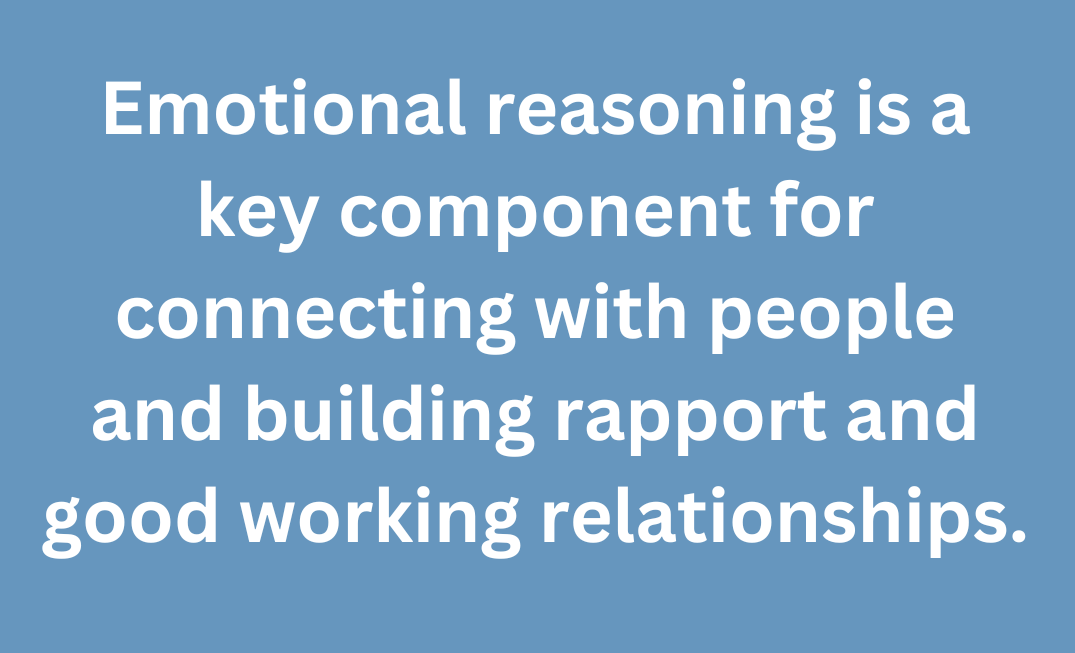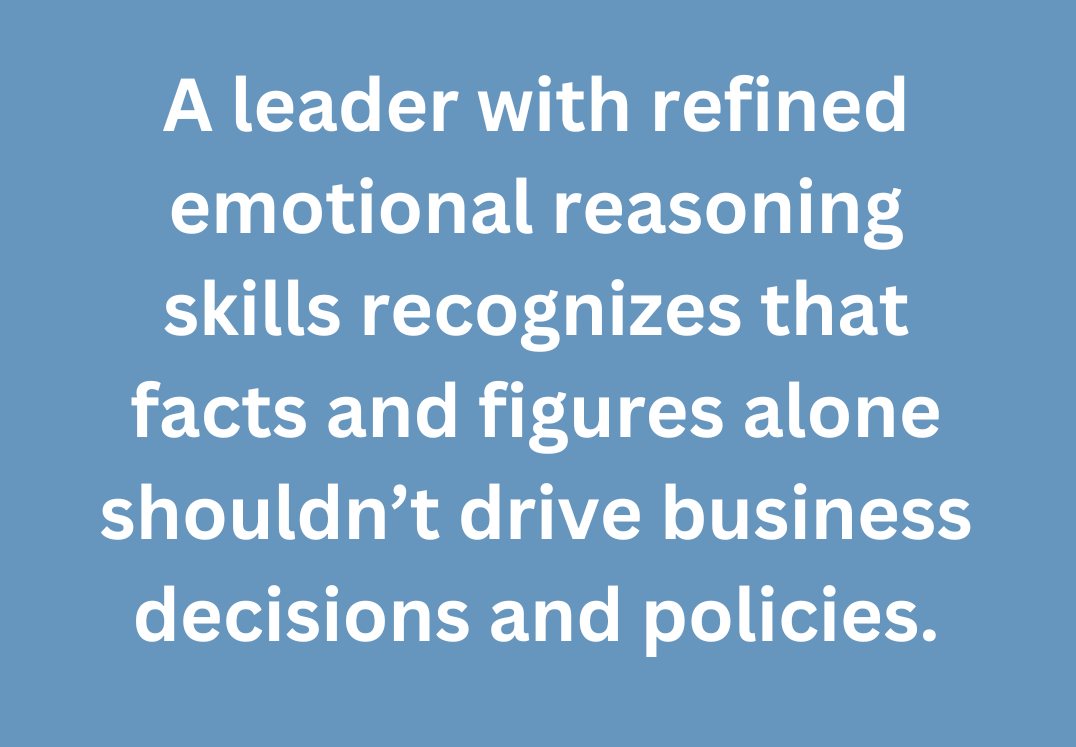Bill is a CEO who prides himself on meticulous planning, but his planning is molded by input from his reports and other team members. He especially cares about how people feel about his plans. When he presents a new initiative, Bill is careful to gauge the reaction from others, both verbal and non-verbal. He considers emotions when shaping business policies and he’s sensitive to his own feelings as well. As a result, Bill has built a team that feels valued and engaged, and works together smoothly to enact effective strategies without creating negative emotional wakes.
••
What separates these two CEOs is their level of emotional reasoning, the branch of emotional intelligence that involves identifying what emotions people are feeling in a given situation, and leveraging that information to better understand the current situation.
Emotional reasoning is a key component for connecting with people and building rapport and good working relationships. In the examples above, we see the outcomes of having one leader with strong emotional reasoning skills, and the other with weak to non-existent skills in this area. We likely know which leader will last longer in their position running the organization.
What is Emotional Reasoning?
Emotional reasoning is about using information derived from feelings (both from oneself and others) and combining it with other facts and information when decision-making. It involves several aspects of emotional intelligence, primarily self-awareness, awareness of others, and empathy. A leader with refined emotional reasoning skills recognizes that facts and figures alone shouldn’t drive business decisions and policies. How people feel about an issue and how they’ll react in current and future situations are equally important in crafting policies that will work in the long run.

As we’ve done throughout this series of posts on emotional intelligence, we’ll call out two elements that are appropriate to the topic at hand, in this case, emotional reasoning. They are:
- Explaining the rationale behind decisions you make (not just acting like you’re in charge and don’t need to explain your decisions).
- Reflecting on feelings when decision-making (it’s not just about logic and facts)
Explaining the rationale behind your decisions to the people affected by them involves your sense of awareness of others and empathy. Employees naturally feel more valued and respected when their opinions are actively sought, and when their managers want to explain why certain actions are being taken. When the feelings of employees are taken into account by upper management, everyone ultimately benefits.
These types of proactive actions taken by leaders strengthens team cohesiveness, improves retention, and positively impacts the culture.
Regarding the second point, smart leaders know that feelings and emotions contain valuable information which can contribute to more informed decisions. Leaders with exceptional emotional reasoning tend to make expansive decisions, rather than limited ones based on facts and technical data only. They know that metrics don’t tell the whole story. Thus, leaders reflect upon their own feelings and seek out reactions from others to expand their set of inputs with which to make a decision.
In Summary
Emotional reasoning is essential to good leadership because:
- Feelings and emotions contain valuable information, which can contribute to more informed decisions,
- An increasingly complex workplace of remote, hybrid and in-office staff require decision making that combines facts and intuition to synthesize optimal approaches,
- People are influenced by emotion, and failing to take the feelings of others into account results in limited support for a leader’s decisions.

As you develop and refine your emotional intelligence, consider the need to incorporate emotional reasoning into your decision making and leadership style. If you do, you’ll find yourself making better decisions that are understood and embraced by the people you lead. They will give you more discretionary effort and will support your decision making processes in good times and bad.
Authenticity is another trait of the emotionally intelligent leader, and although it may be more elusive to define, its impact is significant nonetheless. Read our article on The Importance of Authenticity for Leaders!
If you gained much from this post, we invite you to download our free eBook, “How to Lead With Emotional Intelligence”. If you want to do more than imagine how heightened emotional reasoning can positively impact your leadership and take action with help, then consider working with us 1on1 or request a class for your team.
Watch our video on how important emotional intelligence is for leaders:
Photo copyright: Featured photo is from ©ROMAN ODINTSOV via Pexels. Secondary photo is from ©Andrea Piacquadio via Pexels.




















